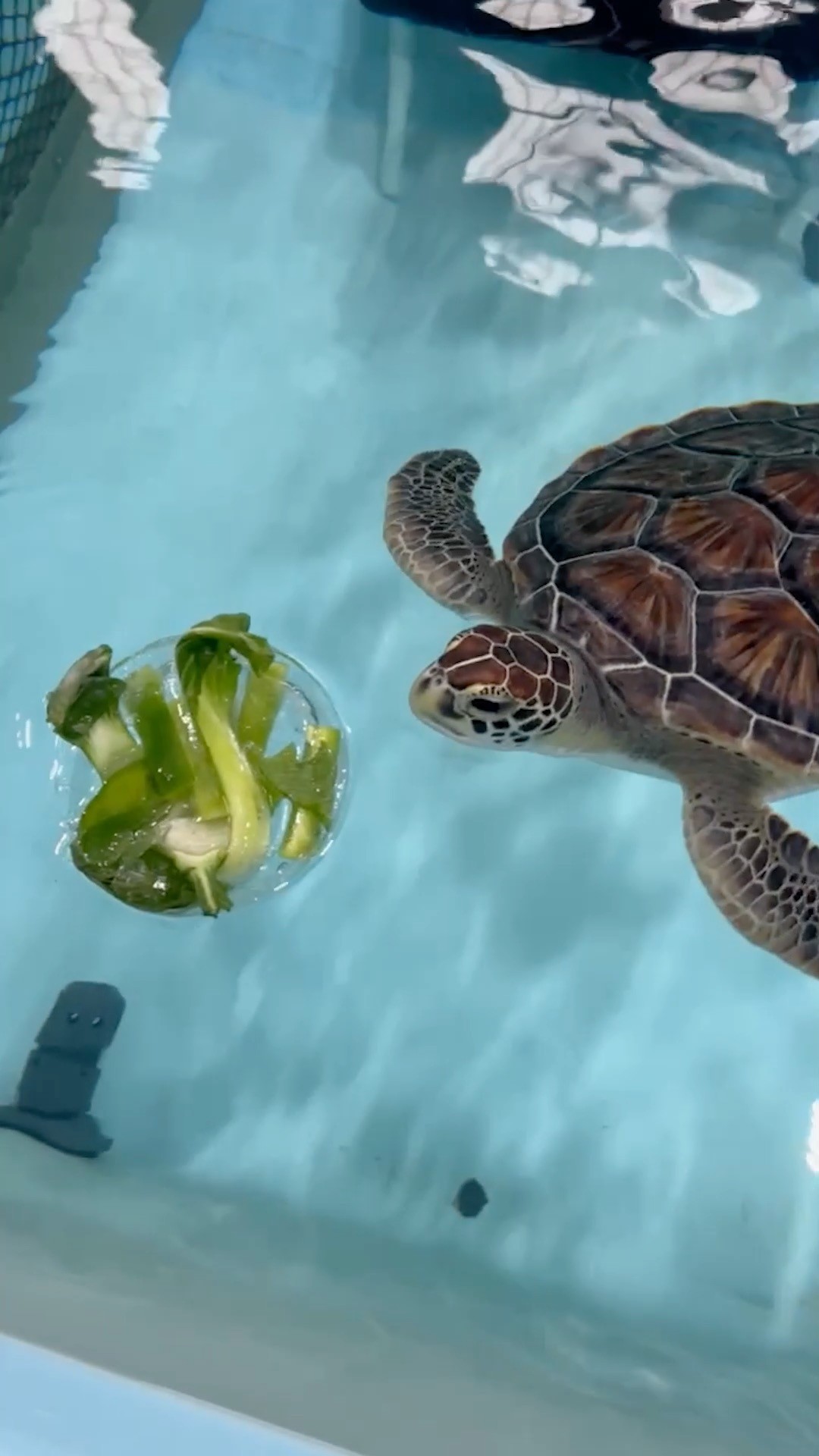- Understanding Turtle Enrichment and its Importance
- Techniques for Implementing Effective Enrichment
- The Role of Enrichment in Sea Turtle Rehabilitation
- Specific Examples of Enrichment Activities
- The Science Behind Behavioral Enrichment
The welfare of sea turtles extends beyond merely providing food and shelter; it involves ensuring their mental and physical wellbeing. Turtle enrichment is a critical aspect of animal care in both zoo environments and rehabilitation settings. It seeks to stimulate natural behaviors that aid in the overall health and happiness of sea turtles. Understanding the fundamentals of turtle enrichment is essential for anyone involved in wildlife conservation or animal care.
Turtle enrichment focuses on creating an environment that encourages natural behaviors. In the wild, sea turtles actively forage for food, explore their surroundings, and engage in social interactions. In captivity, these behaviors may become limited due to the artificial environment. Hence, enrichment is designed to recreate conditions that stimulate the physical and cognitive skills of turtles, ensuring they remain engaged, healthy, and happy.
Let’s explore various techniques to effectively implement enrichment in turtle habitats. The first major method involves food enrichment, which can take various forms. As seen in the example of a frozen lettuce treat, varying the presentation of food can encourage turtles to work for their meals. This could involve hiding food in different substrates or freezing it within ice blocks. Doing so mirrors the challenges sea turtles face in the wild, as they engage in problem-solving and exploration to access their nutrition.
Additionally, the concept of sensory enrichment incorporates elements such as different substrates, water currents, and even the introduction of toys or organic materials. For sea turtles, providing a mixture of habitats—rocky areas, sandy bottoms, and even artificial kelp forests—can stimulate their instincts to navigate varied environments, enhancing their exploratory behavior.
In the context of turtle rehabilitation, enrichment plays a vital role in the recovery process. Rescued turtles can undergo significant stress after their initial rescue, often resulting in lethargy and loss of appetite. Introducing enrichment activities can help alleviate these stresses by encouraging movement and engagement. Activities like swimming through obstacles or foraging for food in a dynamic environment can lead to improved physical health and quicker recovery times.
One fascinating aspect of turtle enrichment is the specific examples of activities that can be utilized. Apart from frozen food treats, environmental enrichment could involve creating varied textures in their habitat—like submerged logs and rocks—to promote climbing and exploration. Enrichment can also include socialization opportunities, allowing them to interact with their own species. This interaction promotes natural behaviors and reduces stress, preparing them for eventual release into the wild.
Behavioral enrichment does not stop at physical activities. Cognitive challenges can be incorporated to promote mental stimulation. Puzzles that require turtles to figure out how to access food can be an entertaining option. For instance, setting up a foraging puzzle that requires the turtle to navigate through a maze to find a reward mimics natural hunting strategies.
The science behind behavioral enrichment significantly informs how animal care practices are developed. Research demonstrates that providing animals with choices and the opportunity to engage in problem-solving activities leads to improved welfare outcomes. In several studies, animals that are regularly subjected to enrichment show fewer signs of stress and increased longevity. For turtles, these benefits manifest through increased activity levels, healthier eating habits, and enhanced social behaviors.
A prominent study conducted on captive-reared sea turtles indicated that those given consistent enrichment opportunities exhibited improved feeding behaviors compared to those without such interventions. These findings highlight the critical need for effective enrichment programs in turtle management.
Incorporating diverse enrichment strategies can also enhance educational experiences for visitors in aquariums and wildlife centers. Engaging the public can foster a greater appreciation for sea turtles and the challenges they face in the wild. By demonstrating enrichment activities in front of an audience, facilities can serve as ambassadors for turtle conservation while educating the public on the importance of maintaining natural habitats for these exquisite creatures.
In addition to physical and cognitive enrichment, it’s vital to consider the emotional wellbeing of sea turtles. Like many welfare-focused animal management practices, establishing peaceful and predictable environments reduces anxiety and stress. Regular routines can contribute to improved behavioral health, as these animals feel secure in knowing what to expect during their daily activities.
As we navigate the complexities of animal care, it’s important to remember that each species has its unique needs. Turtle care involves understanding their specific behavioral tendencies and preferences. Tailoring enrichment activities—whether through food, social interaction, or environmental stimuli—requires a nuanced understanding of these creatures. Observing turtle responses to different enrichment strategies can help refine and enhance these practices over time.
The importance of maintaining a stimulating environment for turtles becomes increasingly apparent when we recognize that they often experience prolonged periods of inactivity in captivity. In natural settings, they continuously move, forage, and explore their surroundings. Without consistent engagement, turtles can exhibit signs of boredom or stress, which can lead to detrimental impacts on their health and welfare.
Turtle enrichment should be viewed as an ongoing process rather than a static protocol. Regularly updating enrichment activities ensures they remain interesting and stimulating. Incorporating a seasonal approach, where different themes and materials are introduced based on available resources, can keep the enrichment efforts fresh and engaging.
Ultimately, the application of turtle enrichment speaks to a broader commitment to wildlife conservation and animal welfare. By recognizing that sea turtles are complex beings with needs that go beyond mere physical survival, we enhance their lives and promote greater respect for their place in our ecosystems. These efforts are not solely about rehabilitation but also about understanding how humans can improve the quality of life for these majestic creatures in a captive environment.
As we embrace more innovative approaches, the goal should always remain clear: to provide enriched and fulfilling lives for sea turtles so they can thrive, both in captivity and when eventually reintroduced into their natural habitats. By focusing on education, public engagement, and the continued development of enrichment techniques, we pave the way for a better future for sea turtles and foster a deeper connection to marine conservation efforts.
*****
Source Description
Turtle enrichment, but make it cool! 🐢❄️
Check out one of our rescued sea turtles working on a frozen treat—a block of ice filled with lettuce!
This chilly challenge isn’t just a snack; it’s enrichment. In the wild, food isn’t handed to sea turtles, so this activity helps mimic natural foraging behaviors. It gets their brains working, keeps them active, and encourages problem-solving.
Looks fun and refreshing to us!


